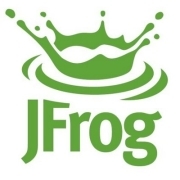DevSecOps integrates security practices within the DevOps process, emphasizing security automation and collaborative workflows. It ensures security is part of the software development lifecycle from the start, enhancing overall security posture without slowing down development.
This approach shifts security to the left, embedding it into all stages of software development. By automating security checks and involving security teams early, it reduces vulnerabilities and compliance issues. DevSecOps encourages a culture where development, operations, and security professionals work together, allowing faster release cycles without compromising on security. Organizations using DevSecOps often benefit from improved risk management and swift reaction to security threats.
What are the critical features of DevSecOps solutions?In industries such as finance and healthcare, implementing DevSecOps is critical due to stringent regulatory requirements. Financial services often employ advanced security automation to manage risks efficiently, while healthcare systems focus on data protection and compliance through integrated DevSecOps processes.
DevSecOps supports organizations in achieving secure and rapid software development. It helps align security with business goals, providing a framework that balances innovation and risk management.




























DevSecOps plays a crucial role in modern software development by integrating security practices seamlessly into every stage of the DevOps pipeline. This approach ensures that security is not an afterthought but a fundamental component of the development cycle, allowing you to identify and address vulnerabilities early on. Implementing DevSecOps can significantly reduce the risk of security breaches, ensure compliance with regulatory standards, and build a culture of shared responsibility among development, operations, and security teams.
How does DevSecOps improve team collaboration?DevSecOps enhances team collaboration by fostering a culture of shared responsibility where development, operations, and security teams work in tandem towards common goals. This collaborative approach helps in breaking down silos and promoting open communication channels, leading to quicker identification and resolution of issues. By using integrated tools and processes, teams can jointly monitor and streamline workflows, ultimately improving productivity and increasing the overall efficiency of the development process.
How can automation tools enhance DevSecOps practices?Automation tools are vital in enhancing DevSecOps practices by enabling continuous integration and deployment processes while maintaining high security standards. By automating repetitive tasks such as testing and monitoring, these tools help you quickly detect security vulnerabilities and compliance violations without manual intervention. This allows your team to act promptly, ensuring that security measures are consistently enforced throughout the development lifecycle and helps you achieve faster deployment cycles and increased security postures.
What role does compliance play in DevSecOps?Compliance is a key component of DevSecOps, ensuring that the software development process adheres to industry regulations and standards. By integrating compliance checks into your DevSecOps pipeline, you can automatically verify adherence to policies and regulatory requirements throughout the development lifecycle. This proactive approach minimizes the risk of non-compliance penalties and helps you maintain a secure and trustworthy software environment that meets both organizational policies and legal obligations.
How can you integrate security testing in the DevSecOps pipeline?Integrating security testing into the DevSecOps pipeline involves incorporating automated security checks into various stages of the development process. Begin by implementing static and dynamic application security testing (SAST and DAST) to analyze code for vulnerabilities early in the cycle. Include security analysis in continuous integration workflows and utilize container security tools if deploying containerized applications. By doing so, you ensure that security assessments are a continuous activity, enabling more secure and robust software delivery.